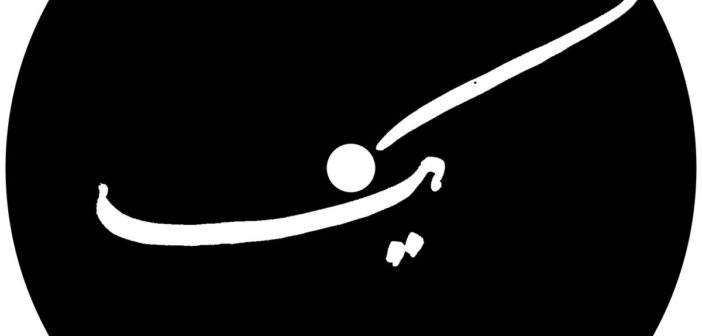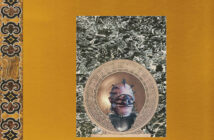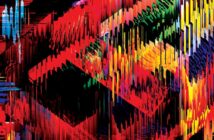Without being in any way abrasive or even particularly aggressive, Yek, a collaborative 12” between Burnt Friedman and Mohammad Reza Mortazavi, creates a consistent mood of intensity. Rhythmically based, the tracks all centre around what feel like pumping electronic rhythms, except that there’s no signs of the regular electronic signposts – 808/909 drum sounds, or 4-to-the-floor pulses or even broken beat loops. The basic building block sounds are a tight mix of synthetic/sampled Middle Eastern/Subcontinental percussion sounds and acoustic versions of the same – in particular, Mortazavi’s tombak, pounding in their bass-weight and spiralling in key signatures that I must admit even I, who pride myself in a fairly diverse rhythmic ability, have sometimes had difficulty pinning down. The cross rhythms play a large part of this, with tiny percussive sounds which, again, might be programmed but might be played live, splattering across the dominant beats in variations and counter-rhythms.
Harmonically, minor key ambience floats across the music. These subtle synths and bleeps don’t really add much in the way of melodic memorability – but that is undoubtedly not their purpose. They are there to give mood and to be the glue seeping between the gaps, holding everything together in the service of the main event, that rhythm programming. There are elements of dub spacialisation, with delays feeding back on themselves in places. And these little details do grab your attention, but there’s never any doubt as to what part of this music is the focus – those incredible polyrhythms. Even the titles point this out. And after repeated listening I finally worked out how to get my head around the rhythms. Each of the four tracks are named for the overall title, Yek, followed by a couple of numbers, the first for the bpms of the track and the second for how many of these beats make up each cycle (so we get ‘Yek 128-12’, ‘Yek 64-22’ (the one that was really doing my head in!), ‘Yes 132-11’ and ‘Yek 122-12’). As well as being an exercise in bass weight and bodily propulsion, the tracks are cerebral labyrinths to keep you engaged on all levels.
The more I’ve listened to these rather alluring tracks, the more I’ve found myself settling on a slightly left-field analogy for them. In many ways, they feel like looking at a prime era Jackson Pollock painting. From a distance, the overwhelming feeling is of a clear overall mood with very obviously present rhythms. But these rhythms, on closer inspection, begin to elude you. As you try to pin them down, you are dragged in to the tiny details which are infinitely complex and beautiful, but which also give lie to the impression of overall planning and structure. So you are snapped back out to the big picture, where you can let yourself go along with the overall flow again for a while, until some little detail grabs you and drags you back into the micro. It is this constant snapping and shifting between the micro and macro levels of the work which becomes the key, defining figure. In Yek, you are never quite able to pin it down and understand exactly what’s going on, but that push and pull between mood and detail is what becomes the very thing that defines the music and makes it so satisfying.




